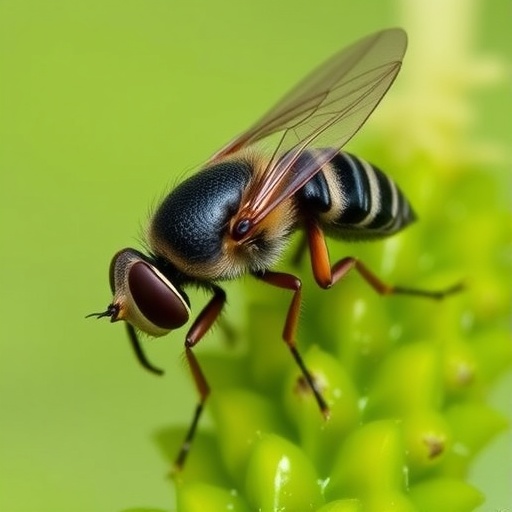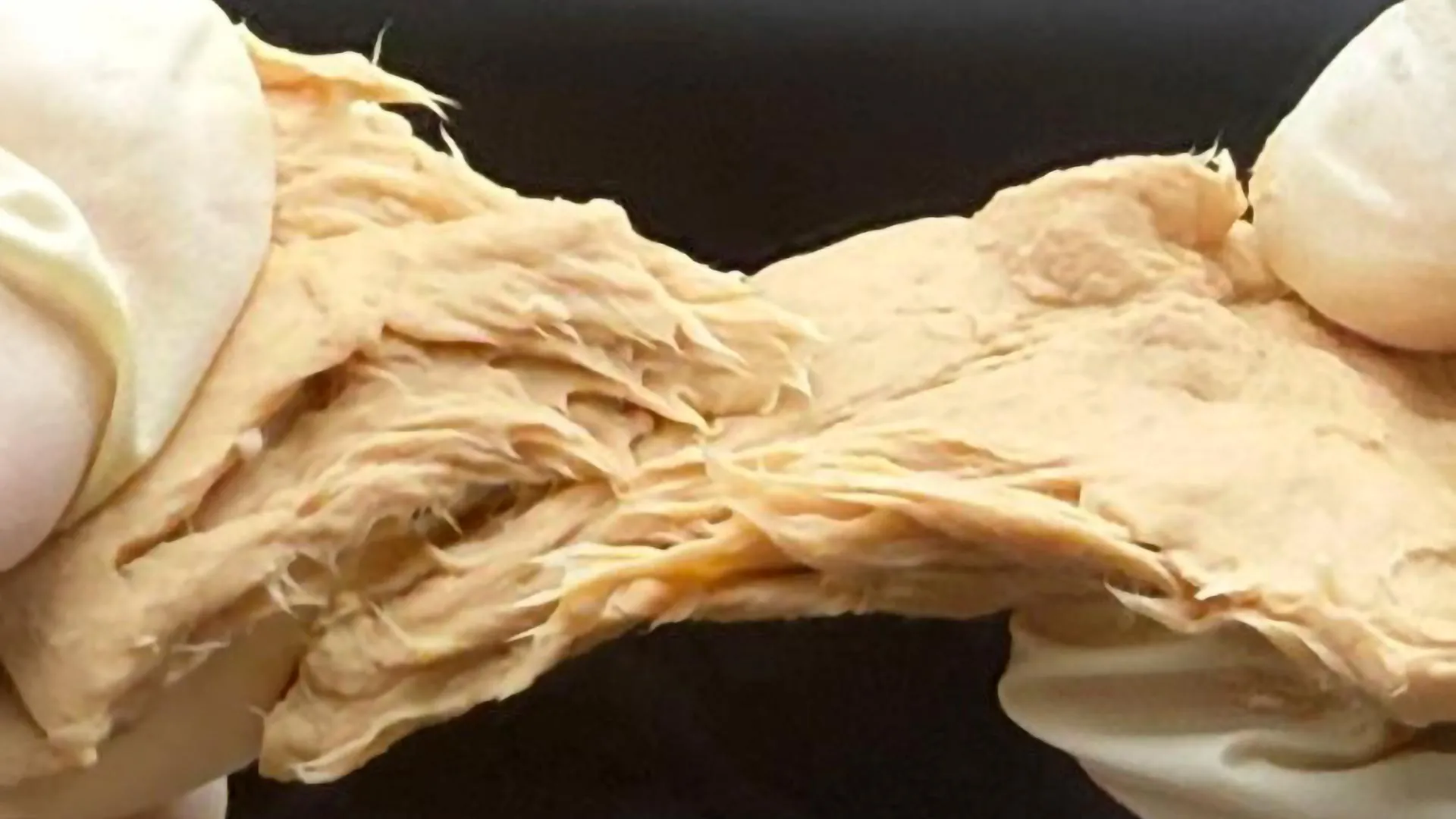Black Soldier Fly Larvae: Innovations in Sustainable Waste Management – Bioengineer.org

Report on Black Soldier Fly Larvae for Sustainable Waste Valorisation and Advancement of Sustainable Development Goals
1.0 Introduction: A Circular Economy Solution for Responsible Consumption
Black Soldier Fly (BSF) larvae present a transformative solution for organic waste valorisation, directly aligning with the principles of a circular economy and contributing significantly to several Sustainable Development Goals (SDGs). By efficiently converting organic refuse into valuable biomass, this technology addresses the global waste crisis and promotes sustainable resource management.
- SDG 12 (Responsible Consumption and Production): BSF larvae facilitate a closed-loop system by transforming waste into resources like protein-rich animal feed and organic fertilizer, substantially reducing waste generation and promoting sustainable production patterns.
- SDG 11 (Sustainable Cities and Communities): The process diminishes the volume of organic waste sent to landfills, mitigating the environmental impact of urban centers and reducing associated greenhouse gas emissions.
2.0 Contributions to Food Security and Sustainable Agriculture
The by-products from BSF larvae processing offer substantial benefits for global food systems, supporting the transition to more sustainable agricultural practices and enhancing food security.
2.1 Sustainable Animal Feed Production
The high-protein biomass generated by the larvae serves as a sustainable alternative to conventional animal feed sources, thereby reducing environmental pressures on terrestrial and aquatic ecosystems.
- SDG 2 (Zero Hunger): Provides a consistent and nutrient-dense protein source for livestock and aquaculture, contributing to stable food production systems.
- SDG 14 (Life Below Water): Offers a viable alternative to fishmeal, alleviating pressure from overfishing and helping to conserve marine biodiversity.
- SDG 15 (Life on Land): Reduces the demand for land-intensive crops like soy, which are often linked to deforestation and habitat loss.
2.2 Enhancement of Soil Health
The excrement from the larval stage, known as frass, is a nutrient-rich organic fertilizer that improves soil fertility and structure.
- SDG 2 (Zero Hunger): Promotes sustainable agricultural practices by enhancing soil health, which is crucial for long-term food security and crop productivity.
- SDG 15 (Life on Land): Contributes to combating land degradation and supports the restoration of soil ecosystems.
3.0 Impact on Climate Action and Environmental Management
The application of BSF larvae in waste management provides a direct pathway to mitigating climate change by reducing potent greenhouse gas emissions.
- SDG 13 (Climate Action): By diverting organic waste from landfills, BSF larvae processing significantly cuts down on methane emissions, a greenhouse gas more potent than carbon dioxide, that is typically generated during anaerobic decomposition.
4.0 Economic Growth and Industrial Innovation
The scaling of BSF technology fosters economic development and drives innovation in the green technology sector.
- SDG 8 (Decent Work and Economic Growth): The establishment of insect farming and processing facilities creates new green jobs and stimulates economic growth in local communities.
- SDG 9 (Industry, Innovation, and Infrastructure): This technology represents a significant biotechnological innovation in waste management, promoting the development of resilient and sustainable industrial infrastructure.
5.0 Challenges and Strategic Imperatives for Advancement
To fully realize the potential of BSF larvae in achieving the SDGs, several challenges must be addressed through targeted research, policy, and public engagement.
- Standardization and Scalability: Research is required to establish standardized rearing protocols to ensure consistent efficiency and enable large-scale commercial application. Biotechnological innovations in genetic selection and microbial symbiosis are key to maximizing productivity.
- Public Perception and Market Acceptance: Overcoming public and consumer reluctance towards insect-based products is critical. Educational campaigns are needed to highlight the environmental, nutritional, and safety benefits, thereby fostering market acceptance.
- Policy and Collaboration: Supportive frameworks involving collaboration between researchers, policymakers, and industry stakeholders are essential to encourage investment and widespread adoption of this sustainable technology.
6.0 Conclusion: An Integrated Approach to Sustainable Development
Harnessing Black Soldier Fly larvae for waste valorisation is a powerful, multi-faceted strategy that concurrently addresses environmental, social, and economic challenges. Its direct contributions to achieving SDG 2, SDG 8, SDG 9, SDG 11, SDG 12, SDG 13, SDG 14, and SDG 15 position it as an integral component of a future sustainable and circular global economy. Continued investment in research and development will be crucial to overcoming existing barriers and unlocking the full potential of this innovative solution for future generations.
Analysis of Sustainable Development Goals in the Article
1. Which SDGs are addressed or connected to the issues highlighted in the article?
-
SDG 2: Zero Hunger
The article connects to this goal by discussing the production of high-quality, protein-rich animal feed and organic fertilizer from Black Soldier Fly (BSF) larvae. This contributes to sustainable agriculture and food security by improving soil health and providing sustainable feed alternatives, which are crucial for food production systems.
-
SDG 8: Decent Work and Economic Growth
The text highlights the economic potential of BSF technology. It mentions that the rising demand for sustainable waste processing could attract investment, create new job markets in insect farming and biotechnology, and drive economic growth in communities that adopt these sustainable practices.
-
SDG 9: Industry, Innovation, and Infrastructure
This goal is addressed through the focus on biotechnological innovations to enhance the efficiency of BSF larvae in waste valorization. The article discusses research in genetic selection and microbial symbiosis as ways to upgrade industrial processes for waste management, promoting sustainable and innovative industrialization.
-
SDG 11: Sustainable Cities and Communities
The article’s central theme of managing organic waste directly relates to making cities more sustainable. By processing food scraps and other organic materials, BSF larvae help reduce the volume of waste sent to landfills, which is a critical aspect of municipal waste management and reducing the environmental impact of cities.
-
SDG 12: Responsible Consumption and Production
This is the most prominent SDG in the article. The entire concept of waste valorization using BSF larvae aligns with circular economy principles. It focuses on reducing waste generation, recycling organic materials, and reusing them to create valuable products like animal feed and fertilizer, thus promoting sustainable consumption and production patterns.
-
SDG 13: Climate Action
The article mentions that the BSF larvae process “minimizes greenhouse gas emissions typically associated with waste decomposition in landfills.” By diverting organic waste from landfills, where it would produce methane (a potent greenhouse gas), this technology serves as a climate change mitigation strategy.
2. What specific targets under those SDGs can be identified based on the article’s content?
-
Target 2.4: Sustainable food production and resilient agricultural practices
The article supports this target by describing how BSF larvae can convert waste into organic fertilizer that “enhances soil fertility” and “promotes sustainable agricultural practices,” which are essential for maintaining food security.
-
Target 8.4: Improve resource efficiency in consumption and production
The process of waste valorization, which turns “what was once considered refuse into resources,” is a direct application of this target. It exemplifies decoupling economic growth from environmental degradation by creating value from waste.
-
Target 9.4: Upgrade infrastructure and industries for sustainability
The article discusses “biotechnological innovations” and the need to standardize rearing conditions to scale up BSF technology for commercial applications. This represents an effort to adopt clean and environmentally sound technologies and processes in the waste management industry.
-
Target 11.6: Reduce the environmental impact of cities
The ability of BSF larvae to process organic waste at a “staggering rate” leads to a significant reduction in waste mass. This directly addresses the part of the target focused on improving “municipal and other waste management.”
-
Target 12.3: Halve per capita global food waste
The article explicitly states that BSF larvae can process “food scraps,” which is a direct method of dealing with food waste at the post-consumer level, contributing to the overall goal of waste reduction.
-
Target 12.5: Substantially reduce waste generation
The core concept of using BSF larvae for waste valorization is a form of recycling and reuse. The article describes it as a way to create a “closed-loop system where resources are continuously reused,” which is a key strategy for reducing waste generation.
3. Are there any indicators mentioned or implied in the article that can be used to measure progress towards the identified targets?
-
Reduction in Waste Volume
The article implies this indicator by stating that the process leads to “significantly reduced waste mass” and “diminishes the volume of waste.” This can be measured as the tonnage or percentage of organic waste diverted from landfills.
-
Greenhouse Gas Emission Reduction
The text mentions that the process “minimizes greenhouse gas emissions.” Progress could be measured by calculating the amount of methane emissions avoided by not sending organic waste to landfills.
-
Production of Valuable Biomass
The article focuses on converting waste into “high-quality protein-rich feed” and “organic fertilizer.” The quantity (in tons) of animal feed and fertilizer produced can serve as a direct indicator of successful waste valorization.
-
Economic Growth and Job Creation
The text suggests that this technology could “create new job markets” and “drive economic growth.” Indicators could include the number of new businesses established in insect farming, the number of jobs created, and the market value of BSF-derived products.
-
Adoption of Technology
The article discusses the need for “collaborative efforts” to “encourage the adoption of waste valorization technologies.” An indicator of progress would be the number of municipalities or companies integrating BSF larvae into their waste management systems.
4. Summary Table of SDGs, Targets, and Indicators
| SDGs | Targets | Indicators |
|---|---|---|
| SDG 2: Zero Hunger | 2.4: Ensure sustainable food production systems and implement resilient agricultural practices. | Quantity of organic fertilizer produced; Improvement in soil fertility metrics. |
| SDG 8: Decent Work and Economic Growth | 8.4: Improve global resource efficiency in consumption and production. | Number of new jobs created in the insect farming sector; Economic value of BSF-derived products. |
| SDG 9: Industry, Innovation, and Infrastructure | 9.4: Upgrade infrastructure and retrofit industries to make them sustainable. | Number of waste management facilities adopting BSF technology; Investment in biotechnological research for BSF. |
| SDG 11: Sustainable Cities and Communities | 11.6: Reduce the adverse per capita environmental impact of cities, including waste management. | Tonnage of organic municipal waste processed by BSF larvae; Percentage reduction in waste volume sent to landfills. |
| SDG 12: Responsible Consumption and Production | 12.3: Halve per capita global food waste. 12.5: Substantially reduce waste generation through recycling and reuse. |
Amount of food scraps and agricultural by-products converted into biomass; Rate of waste valorization (input waste vs. output product). |
| SDG 13: Climate Action | 13.3: Improve education and awareness on climate change mitigation. | Calculated reduction in greenhouse gas (e.g., methane) emissions from diverted landfill waste. |
Source: bioengineer.org
What is Your Reaction?
 Like
0
Like
0
 Dislike
0
Dislike
0
 Love
0
Love
0
 Funny
0
Funny
0
 Angry
0
Angry
0
 Sad
0
Sad
0
 Wow
0
Wow
0
















































/environment-climate-change-and-health-(ech)/water-sanitation-hygiene-and-health-(wsh)/landfill-tuvalu-36092.tmb-1200v.jpg?sfvrsn=5c21fe40_1#)

.jpg.webp?itok=0ZsAnae9#)


























